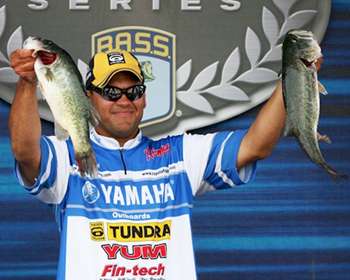
When the soft plastic stickbait hit the tournament scene, it seemed as though bass fishing had been transformed. The bait had so many applications that an angler could fish anywhere in the water column with one bait and be just as effective.
Now that the soft stickbait trend has firmly established itself, size has become an issue. Elite Series pro Dave Wolak points out that, while the bait may come in a myriad sizes, most anglers can have success by relying on only a few.
"I know that this is cliché, but using the big 8- to 10-inch stickbait is going to mean that the caliber of fish you're around are bigger," says Wolak. "There aren't many lakes in America where you can have consistent success with a giant soft plastic stickbait."
As a result, Wolak is most comfortable and confident in using smaller versions for much of his fishing. "There are just so many different techniques where you can use plastic stickbaits that are 5 to 7 inches long," he points out.
"You can deadstick them, rig them Texas style, wacky rig them. The list just goes on and on. The only time I get out of that 5- to 7-inch size range is if I'm drop shotting, where I'll go much smaller, or if I'm around grass on a lake known for giant bass, where I'll go big."
Wolak points out that fishing a grass lake is a prime area to use the larger stickbait effectively. "If I'm on a grass lake during the fall after the grass has shriveled up and is lining the bottom, I like to Texas rig a 7-inch Yum Dinger using a 1/16-ounce screw-in sinker and a 7/0 hook," he says.
"You can fish it just like you would a 10-inch worm, but the lighter weight keeps it on top of the canopy. It's a really great way to catch big fish."
With the smaller sizes of soft plastic stickbaits, Wolak explains that hook size can be an issue. "I usually let the fall rate I'm trying to achieve determine my hook size when I'm fishing these baits," he explains. "Sometimes the additional weight between a 4/0 and a 5/0 hook can make a lot of difference in your fishing." Particularly in the fall and early winter, Wolak keeps his bait in the strike zone as long as possible, so a lighter hook can make a big difference.
Wolak points to the 2009 Bassmaster Classic on the Red River as an example of when a light hook on a small stickbait paid off. "I couldn't let the bait touch the bottom because slimy grass would just cover my bait. I rigged my stickbait with a real light weight and a little 'mosquito hook' that kept it just above the bottom."




